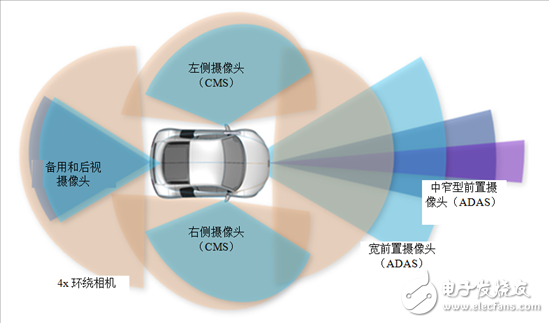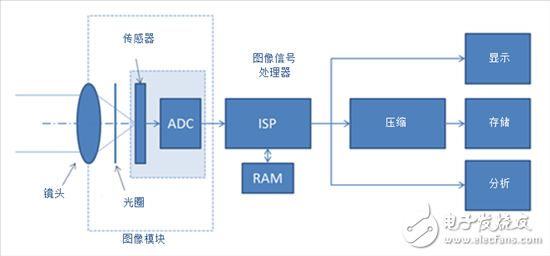In October 2002, Cameron Gulbransen was killed by his father Greg Gulbransen. The reason is that Greg Gulbransen did not see his son behind the car because of a big blind spot behind the SUV when the car was slowly reversing. Cameron Gulbransen ran into the blind spot and was accidentally knocked down by the car.
This is a turning point in the effort to install an electronic camera on the car to help improve safety.
Greg promised that the events that happened to his son would never happen to anyone else. He joined KidsAndCars.org, a child safety advocacy group, and launched an event to eliminate blind spots behind the car by installing an electronic backup camera. After 12 years of hard work, he finally succeeded. The US Department of Transportation (DOT) National Highway Traffic Safety Administration (NHTSA) announced on March 31, 2014 the requirement to install a rear visualization technology camera in all new cars weighing less than 10,000 pounds by May 2018. “The rear visualization requirements can save lives and will protect many families from the pains of these tragic events,†said NHTSA Acting Director David Friedman.
DOT estimates that an annual reversal in the United States would result in 210 deaths and 15,000 injuries, most of which involve children and the elderly. KidsAndCars.org estimates that 1,126 children died during the period from 1991 to 2012 due to a reversing accident. Most of these deaths can be prevented by an alternate camera.
Many manufacturers have not waited for the official release of the order, they have begun to install an alternate camera as an option. By 2012, nearly half of the cars sold in the United States had this feature in place, and many aftermarket manufacturers began making kits to retrofit old cars. This is the beginning of the car's "image revolution."
Camera-based active safety systems are now rapidly increasing in cars. In addition to the spare camera, your typical 2017 model may also have the following equipment:
Surround view system using four cameras
ADAS front camera system with up to three cameras
Rearview mirror auxiliary camera
Surveillance camera
Driver surveillance camera
Side view camera
Starting in 2017, many new models will have more than 12 cameras to help improve safety.

Figure 1. Car camera

Figure 2. Typical electronic digital camera
A typical electronic digital camera includes a lens that captures light and an image sensor that converts light into an electrical signal on a photosensor array called a pixel. These pixel signals are then fed into an Image Signal Processor (ISP) for processing into a desired image, which is then sent to a display for viewing, compressed for storage or transmission for further computer vision analysis.
Cameras on cars can be divided into two categories - for visual display and for machine vision. The camera for visual display presents an image to the driver on the display of the cockpit. Examples of these applications are:
Alternate camera head
Surround view system using four cameras
Rearview mirror auxiliary camera
Monitor
Side view cameras - either enhance the image or replace them completely
Night vision camera
A camera for a visual or analytic application generates an image for use by the vision processor. The vision processor analyzes pixel data to perform advanced driver assistance system (ADAS) functions. The analysis functions run on a custom TI heterogeneous architecture called Vision AcceleraTIon Pac, which consists of a custom embedded vision engine (EVE) that works in tandem with the industry-leading TI C6000TM DSP and ARM® cores. EVE is a dedicated fully programmable TI vector processor designed to efficiently handle low- and medium-level computer vision algorithms at extremely high speeds. It complements the TI C6000 DSP that handles advanced vision algorithms. Examples of analytic applications are:
Adaptive Cruise Control (ACC)
Adaptive high beam
Blind spot monitor
Collision avoidance system
Forward collision warning
Smart Speed ​​Adaptation or Smart Speed ​​Recommendation (ISA)
Lane departure warning system
Driver monitoring system - for sleepiness and distraction detection
The requirements for image processing for visual use cases are significantly different from the requirements for image processing for visual/analytical use cases. Visual use cases focus on providing viewers with the best perceived image quality, emphasizing visually pleasing colors and tones, reducing perceived noise levels, increasing dynamic range and edge enhancement to sharpen images. These requirements map directly to the perception of the human visual system.
On the other hand, analysis cases do not care about perceived image quality because they focus on a class of image processing algorithms that aid in computer vision. Therefore, when processing the analysis, there is no need to increase the algorithm for perceiving visual quality, such as color correction and white balance correction.
ADAS applications rely on cameras to provide digital video streams for computer vision algorithms to help provide safety and driver comfort. The video stream must be of high quality, free of defects, real time and with low latency. It must be able to handle typical automotive challenges with wide field of view and high dynamic range. Finally, the camera system should be able to operate at low power and thermal budgets and maintain signal integrity under a variety of temperature and weather conditions.
Micro Data Cable,Charging Data Cable,Micro Usb Data Cable,Micro Usb Transfer Cable
SUNSHINE ELECTRONICS TECH. CO., LTD. , https://www.benefitucx.com
